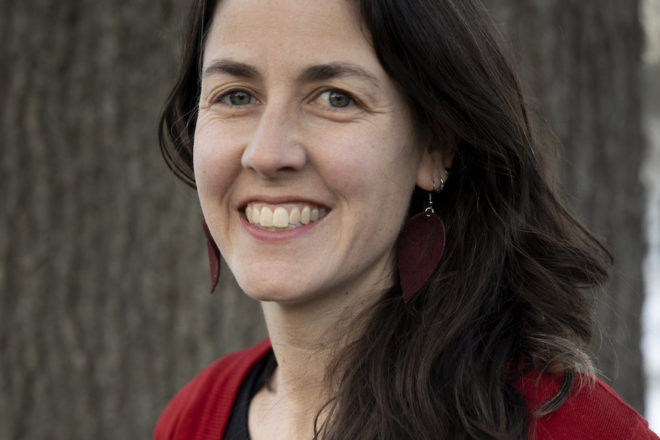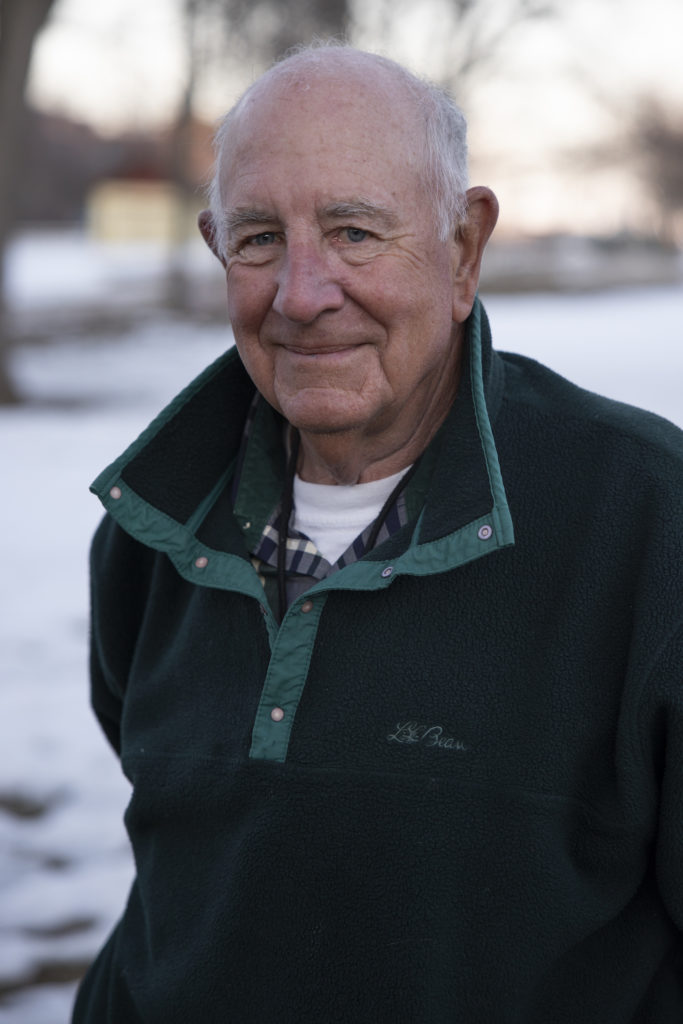
Coburn Dukehart’s work for the Wisconsin Heart for Investigative Journalism normally takes her to rooster runs and the front line of protests, up close with younger subjects, and up in the air to capture the scope of voting traces in April 2020.
You have possible seen Tad Dukehart’s title in the internet pages of the Peninsula Pulse, most notably for his pictures of fire phone calls and county functions. But just before he retired to Ephraim and began capturing the county’s history, he expended 40 decades recording heritage in Baltimore and Washington, D.C. — from Martin Luther King Jr.’s “I Have a Aspiration Speech,” to Spiro Agnew’s resignation deal with, to the Million Person March. He bore witness to vital moments in our nation’s background and from time to time took along his daughter, Coburn Dukehart, who grew up with an interest in capturing and sharing historical past as effectively.
Coburn’s career has taken her from modifying photograph galleries for WashingtonPost.com, to performing as the photograph and multimedia editor at National Community Radio, to getting to be a senior editor at National Geographic. She’s now the digital and multimedia director for the Madison-centered Wisconsin Heart for Journalism, where by she edits images, manages the site and goes out into the discipline to seize the information.
With each other, they will sift by way of images submissions to obtain an “elevated moment,” as Coburn puts it, as co-judges for the Hal Prize, the yearly literature and images contest of the Peninsula Pulse.
Earlier mentioned: Photos by Coburn Dukehart
We achieved by using Zoom to chat about their occupations, what they look at to be a good photograph and why introverts can usually make the very best photographers. The interview has been edited for place and clarity.
Sally Collins (SC): Tad, you witnessed some fairly wonderful record during your career in Washington. Can you notify me a little little bit a lot more about that?
Tad Dukehart (TD): I was very younger when I acquired a weekend photographer’s career at a television station in Baltimore. We shot black-and-white newsreels employing Next Environment War surplus cameras. I lined a whole lot of the civil-rights era there. I filmed the March on Washington, the place Martin Luther King Jr. produced his “I Have a Desire Speech,” and it was decades prior to I realized what I experienced viewed.
Just after the Million Male March in 1995 in Washington, D.C., in which a million African American men confirmed up to the Capitol to clearly show what they can do for the country, I was at the foundation of the Capitol, and I looked and mirrored and claimed, “You know what? I definitely have arrive a very long way. From masking Martin Luther King Jr.’s speech at the other conclusion of the mall to these days, with a million gentlemen exhibiting up.”
SC: Have been you getting pictures throughout this time, or have been you performing newsreel?
TD: I did newsreel. I didn’t really decide up a nevertheless digital camera until finally we retired to Ephraim. My point is, I take pics of folks. My biggest pleasure is to guidance nonprofits with photographs. I started off with the Ephraim Hearth Department, having photos for them, and then it morphed into taking images for Sister Bay and Baileys Harbor and any style of significant function up in this article.

They may possibly not feel extremely essential at the time, but what is going on is pictures from 7, 8, nine a long time ago become much more significant.
SC: Coburn, when did you very first choose up a digicam?
Coburn Dukehart (CD): It was not till following I graduated from college [Coburn earned a journalism degree at UW-Madison and a master’s in photojournalism at Missouri]. Actually, Tad had an outdated black-and-white film camera, a Nikon. I took some darkroom courses at a neighborhood artwork middle in the vicinity of D.C. then Tad introduced me to a newspaper photographer, and she took me to get the job done with her a couple instances and let me shadow her.
SC: What drew you to photojournalism?
CD: I really don’t actually like currently being bored. Most men and women who get into photojournalism like the wide variety, and like talking to diverse people, and finding out new factors all the time, and getting out into the world. I see my work and journalism as telling tales as opposed to getting images.
SC: What are you on the lookout for in a great photograph?
CD: My aesthetics are a considerably far more human-centered, second-centered approach to visuals: hunting for the story and the feeling a photograph may well create, as opposed to a little something gorgeous for the sake of remaining gorgeous.
TD: I assume in Door County, people tend to post images of sunsets and Cave Position more than and over and in excess of yet again. Yeah, they are attractive, but I don’t see the wide range.
Over: Shots by Tad Dukehart
CD: It is uncomplicated to get a cliché photo or go the place anyone else has gone. But if you go someplace different or change your point of view — you get down low, you stand up high — I imagine you will surprise individuals by exhibiting them one thing they may possibly not be ready to see by on their own.
SC: I know quite a handful of photographers who are really shy, but a thing transpires when they get at the rear of the digital camera. Have you found that as effectively?
CD: That’s legitimate for me. Many photojournalists are quite shy, peaceful people, and I think people are the varieties of people who tend to get definitely significant photos because they never make it about themselves and can disappear into the track record.
Tad has an gain having photographs of people for the reason that of his job. He’s so comfortable interacting with people he’s a individuals individual. Beginning photographers are likely to keep absent from folks, and it is tricky to consider a significant photo of people today if you never get close to them. Introduce yourself and say, “I found you are undertaking this factor. Can I get your photograph?” Most people will say certainly.
SC: What is your advice for individuals who are taking into consideration distributing or getting shots?
CD: Do some self-modifying. Be prepared to display the photos to somebody else before submitting. I believe there is a typical misperception when individuals get a photo that if they labored definitely tricky to take it, it need to be genuinely excellent.
And there are three things that may possibly make a good photograph. Just one is gentle. The second is composition, so it really should be aesthetically satisfying, and then second: Is a thing going on in the body that is meaningful? Any profitable picture is going to have all 3 of individuals components.
Submit to the Hal Prize
The Hal Prize, the yearly literature and photography prize of the Peninsula Pulse and Create On, Door County, has a new deadline, new format and some enjoyable new good reasons to submit in 2021.
This year’s winners will be printed the two in the Peninsula Pulse and in the new 8142 Evaluate, a selection of tales, images and poetry to be introduced in November. Submissions are open up by means of Sept. 15 in 4 types: fiction, nonfiction, poetry and images.
Prizes contain dollars prizes of $250, $100 and $50 for the top 3 entries in each individual group and a Hal Prize mug from Clay Bay Pottery for initially position. Learn a lot more and meet this year’s judges online.

